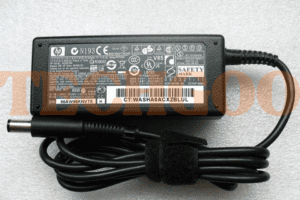SSD cannot be used as RAM because SSDs use non-volatile memory to store data, which is slower than the volatile memory used in RAM. In today’s technological landscape, SSDs have become increasingly popular as storage devices due to their faster read and write speeds compared to traditional hard drives.
However, it is important to note that SSDs cannot be directly used as RAM. RAM, or Random Access Memory, serves as temporary storage for data that the CPU needs to access quickly. On the other hand, SSDs use non-volatile memory circuitry to store data, which means that the data remains in place even when the computer is turned off.
While SSDs provide fast storage, they are still slower than RAM due to the different types of memory used. Therefore, SSDs cannot serve as a substitute for RAM in a computer system.
Understanding SSD And RAM
SSD cannot be used as RAM because they serve different purposes in a computer system. SSD is used for long-term storage of data, while RAM is used for temporary storage of data that the computer needs to access quickly.
What Is SSD?
- SSD stands for Solid State Drive.
- It is a type of storage device that uses flash memory.
- SSDs are known for their faster read and write speeds compared to traditional hard drives.
- They have no moving parts, which makes them more durable and less prone to mechanical failure.
- SSDs are commonly used in computers, laptops, gaming consoles, and other electronic devices.
What Is RAM?
- RAM stands for Random Access Memory.
- It is a type of computer memory that is used to store data that is currently being accessed by the computer’s processor.
- RAM is volatile memory, meaning that its contents are lost when the computer is powered off or restarted.
- It is much faster than storage devices like SSDs or hard drives.
- RAM plays a crucial role in determining how fast a computer can perform tasks.
Differences between SSD and RAM:
- SSD is a storage device, while RAM is memory.
- SSDs store data long-term, while RAM is used for short-term data storage.
- SSDs are significantly larger in capacity compared to RAM.
- SSDs are slower than RAM but faster than traditional hard drives.
- SSDs are non-volatile, meaning data remains even when power is off, while RAM is volatile and loses data when powered off.
- SSDs are used to store operating systems, software, files, and other data, while RAM is used for running programs and processing data.
- SSDs can be used to increase system performance by acting as virtual RAM on some operating systems.
- Upgrading SSD can improve overall system speed, while upgrading RAM can help with multitasking and running memory-intensive applications.
SSDs and RAM play distinct roles in a computer system – SSD for long-term storage and RAM for short-term memory. While SSDs are larger and slower than RAM, they provide data persistence even when powered off. Upgrading SSD can enhance overall system performance, while upgrading RAM can improve multitasking capabilities.
Virtual Memory And Paging File
Using SSD as RAM is possible through virtual memory and paging file settings. By configuring the virtual memory settings, you can allocate a portion of your SSD as virtual RAM, allowing for increased memory capacity and improved performance.
Virtual memory is a memory management technique used by operating systems to provide the illusion of having more physical memory than is actually available. It allows applications to use more memory than is physically present in a computer by using a combination of RAM and disk space.
In virtual memory, the RAM acts as a cache for frequently accessed data, while the disk space serves as an extension to store less frequently used data.
How Does A Paging File Work?
A paging file, also known as a swap file or page file, is a portion of the hard disk that is used as virtual memory by the operating system. When the physical memory (RAM) is full, the operating system moves the least recently used data from the RAM to the paging file on the hard disk.
This frees up space in the RAM for other processes to use. When the data is needed again, it is moved back into the RAM.
Using a paging file helps prevent the system from running out of memory and experiencing performance issues. It allows the operating system to efficiently manage and allocate memory resources to different processes.
Can SSD Be Used As Virtual Memory?
Yes, SSD can be used as virtual memory. In fact, using an SSD for virtual memory can significantly improve system performance compared to using a traditional hard disk drive (HDD). SSDs are much faster than HDDs, which means that data can be read from and written to the SSD much more quickly.
This results in faster loading times for applications and reduced latency.
To use an SSD as virtual memory, you need to configure the paging file settings in your operating system. Here’s how you can do it in Windows:
- Right-click on “This PC” or “My Computer” on your desktop and select “Properties.”
- Click on “Advanced system settings” on the left side of the window.
- In the System Properties dialog, click on the “Settings” button under the “Performance” header.
- Go to the “Advanced” tab and click on “Change” under the “Virtual memory” header.
- Uncheck the option that says “Automatically manage paging file size for all drives.”
- Select your SSD drive and choose either “System managed size” or “Custom size” for the paging file.
- If you choose “System managed size,” the operating system will automatically set the appropriate size for the paging file on the SSD.
- If you choose “Custom size,” you can manually specify the minimum and maximum size for the paging file on the SSD.
- Click “OK” to save the changes.
Using an SSD as virtual memory can boost your system’s performance, especially when multitasking or running memory-intensive applications. It allows for faster data access and reduces the time it takes for your system to retrieve data from the paging file.
Remember to consider the available space on your SSD when configuring the paging file size to ensure you have enough room for other files and applications.
Windows Operating System Configurations
SSD cannot be directly used as RAM, but it can be used to enhance the performance of RAM through techniques like ReadyBoost and virtual memory configurations in Windows operating systems. By utilizing SSD as a storage cache or expanding virtual memory, users can experience improved system responsiveness and faster performance.
How To Use SSD As RAM On Windows 10?
Using SSD as RAM can significantly improve the performance of your Windows 10 operating system. Here are the steps to configure your system settings and make the most out of your SSD:
- Accessing advanced system settings: Right-click on “This PC” on your desktop and select “Advanced system settings.” This will open the System Properties dialog.
- Configuring virtual memory settings: In the System Properties dialog, click on the “Settings” button under the “Performance” header. Then, go to the “Advanced” tab and click on “Change” under the “Virtual memory” header. This will open the Virtual Memory dialog, where you can configure the amount of your hard drive that will be used as RAM.
- Selecting SSD drive for paging file location: Un-check the “Automatically manage paging file size for all drives” option in the Virtual Memory dialog. This will allow you to customize the settings. Then, click on your SSD drive to select it as the location for your paging file (virtual RAM).
- Setting system managed size or custom size: You can choose between setting the paging file size as “System managed size” or “Custom size.” If you want Windows to manage the size automatically based on your system’s needs, select “System managed size.” Alternatively, if you prefer to set a specific size, choose “Custom size” and enter the minimum and maximum page file sizes.
How To Use Readyboost As RAM Using M.2 SSD In Windows 10?
ReadyBoost is a feature in Windows 10 that allows you to use an M. 2 SSD as additional RAM. Here’s how you can enable this feature:
- Checking ReadyBoost activity status: First, check if your M.2 SSD is compatible with ReadyBoost. Right-click on your SSD drive in File Explorer, select “Properties,” and go to the “ReadyBoost” tab. If the tab is not visible, it means that your SSD does not support ReadyBoost.
- Enabling ReadyBoost: To enable ReadyBoost, click on the “Use this device” option in the ReadyBoost tab. You can then adjust the slider to allocate the amount of SSD space you want to use as additional RAM.
- Disabling ReadyBoost: If you want to disable ReadyBoost, simply uncheck the “Use this device” option in the ReadyBoost tab. This will free up the SSD space reserved for ReadyBoost and revert to its previous usage.
By following these steps, you can effectively boost your system’s performance by utilizing your SSD as RAM or using ReadyBoost with an M. 2 SSD. Remember to customize the settings according to your specific needs for optimal results.
Maximizing Ram With SSD
Maximizing RAM with SSD is not possible as SSD cannot be used as RAM. SSDs are slower than RAM and they store data using non-volatile memory circuitry, making them unsuitable for RAM functions.
Converting hard drive space into more RAM:
- One way to maximize RAM is by using SSD (Solid State Drive) as virtual memory.
- Virtual memory is a technique that allows the computer to use a part of the hard drive as temporary storage in order to supplement the physical RAM.
- By converting hard drive space into virtual RAM, you can effectively increase the overall memory available to your system.
Exploring the concept of virtual memory:
- Virtual memory serves as an extension to physical RAM, providing additional space for storing data when the RAM is fully utilized.
- When your computer runs out of physical RAM, it uses the virtual memory to temporarily store less frequently accessed data.
Customizing the size of the virtual memory:
- The size of the virtual memory, also known as the paging file, can be customized to suit your specific needs.
- By default, Windows manages the size of the paging file automatically. However, you can also manually set the size.
- If you have an SSD, you can allocate a portion of it as virtual memory and improve the performance of your system.
Benefits and limitations of using SSD as RAM:
Benefits:
- Faster data access speeds compared to traditional hard drives, resulting in improved overall system performance.
- Reduced latency and faster response times, leading to a smoother user experience.
- Increased multitasking capabilities, allowing you to run more applications simultaneously without experiencing significant slowdowns.
Limitations:
- SSDs have a limited number of read and write cycles, so excessive usage as virtual RAM can cause quicker wear and potentially shorten the lifespan of the SSD.
- Depending on the size of your SSD and the amount of virtual memory you allocate, there may be limitations on the maximum amount of RAM that can be effectively utilized.
Using SSD as RAM can be a viable option for maximizing the available memory in your system. However, it is important to consider the potential limitations and ensure that the SSD is not excessively used as virtual RAM to avoid premature wear and reduce its lifespan.
Is SSD As Good As RAM?
SSD cannot be used as RAM. While SSDs use non-volatile RAM for data storage, they are still slower than traditional RAM. SSDs are better used for long-term storage and faster boot times, while RAM is essential for immediate access to data and improving overall system performance.
Understanding The Differences Between SSD And RAM Performance:
- SSD (Solid State Drive) and RAM (Random Access Memory) are both storage options in a computer, but they serve different purposes.
- RAM is a type of volatile memory that stores the data that the computer currently needs to access quickly.
- SSD, on the other hand, is non-volatile memory that stores data even when the computer is turned off and is used for long-term storage.
- RAM is much faster than SSD in terms of data access and retrieval speed.
- RAM operates at nanosecond speeds, whereas SSD operates at microsecond speeds.
- RAM is directly connected to the computer’s processor, allowing for faster data transfer, while SSD is connected via the storage bus, which introduces some latency.
Evaluating The Reliability And Speed Of SSD Compared To RAM:
- RAM is generally considered more reliable because it is less prone to failure compared to SSD.
- SSD has a limited number of write cycles, meaning it can only be written to a certain number of times before it starts to degrade.
- RAM does not have this limitation, as it can be written to many times without any negative impact on performance.
- In terms of speed, RAM is significantly faster than SSD. This is because RAM does not have any moving parts, while SSD relies on the movement of electrons to store and retrieve data.
Best Use Cases For SSD As RAM:
- SSD can be used as virtual RAM or a paging file on a computer.
- Virtual RAM, also known as a page file, is a portion of the hard drive that is reserved for use as additional RAM.
- Using SSD as virtual RAM can help improve system performance, especially on computers with limited RAM.
- It can be beneficial when running memory-intensive applications, such as video editing software or virtual machines.
- The use of SSD as RAM can provide a significant boost in system performance, as SSDs have faster read and write speeds compared to traditional hard drives.
- However, it’s important to note that SSD is still slower than RAM, so it’s not a direct replacement for physical RAM.
- SSD as RAM should be considered as a temporary solution or a way to supplement existing RAM, rather than a permanent substitution.
By understanding the differences between SSD and RAM performance, evaluating their reliability and speed, and identifying the best use cases for SSD as RAM, you can make informed decisions about utilizing SSD effectively in your computer system. Remember that while SSD can improve performance, it is not a direct substitute for RAM and should be used as a complementary solution.
Frequently Asked Questions On Can SSD Be Used As RAM?
Is SSD As Good As RAM?
No, SSD is not as good as RAM. While SSDs use memory circuitry to store data, they are slower than RAM.
Do I Need RAM If I Have SSD?
No, SSDs cannot completely replace RAM. RAM is still necessary for the efficient functioning of your computer.
Is SSD Good For Virtual Memory?
Yes, SSD is good for virtual memory. It can be used as an alternative to RAM.
Can An SSD Be Used As RAM In A Computer?
No, an SSD cannot be used as RAM in a computer. While both SSDs and RAM store data, they work differently. RAM is a type of volatile memory, which means it is used for temporary storage and is cleared when the computer is turned off.
SSDs, on the other hand, are non-volatile storage devices that are used for long-term data storage. RAM is much faster than SSDs, so using an SSD as RAM would result in a significant decrease in performance.
Conclusion
To conclude, SSDs (Solid State Drives) cannot be used as RAM (Random Access Memory) as a direct replacement. While SSDs use non-volatile RAM (NVRAM) to store data, they are still slower than RAM. RAM is essential for the smooth functioning of a computer as it provides quick access to data that the CPU needs to process.
On the other hand, SSDs are used for long-term storage and offer faster boot-up times and data retrieval compared to traditional hard drives. Although SSDs have significant advantages over hard drives in terms of speed and reliability, they cannot fully replace the need for RAM.
Both RAM and SSDs play important roles in a computer system, and they work together to enhance performance. So, while SSDs cannot be used as a substitute for RAM, they can complement each other to provide an improved computing experience.
Therefore, it is crucial to have an adequate amount of RAM along with an SSD for optimal performance.




